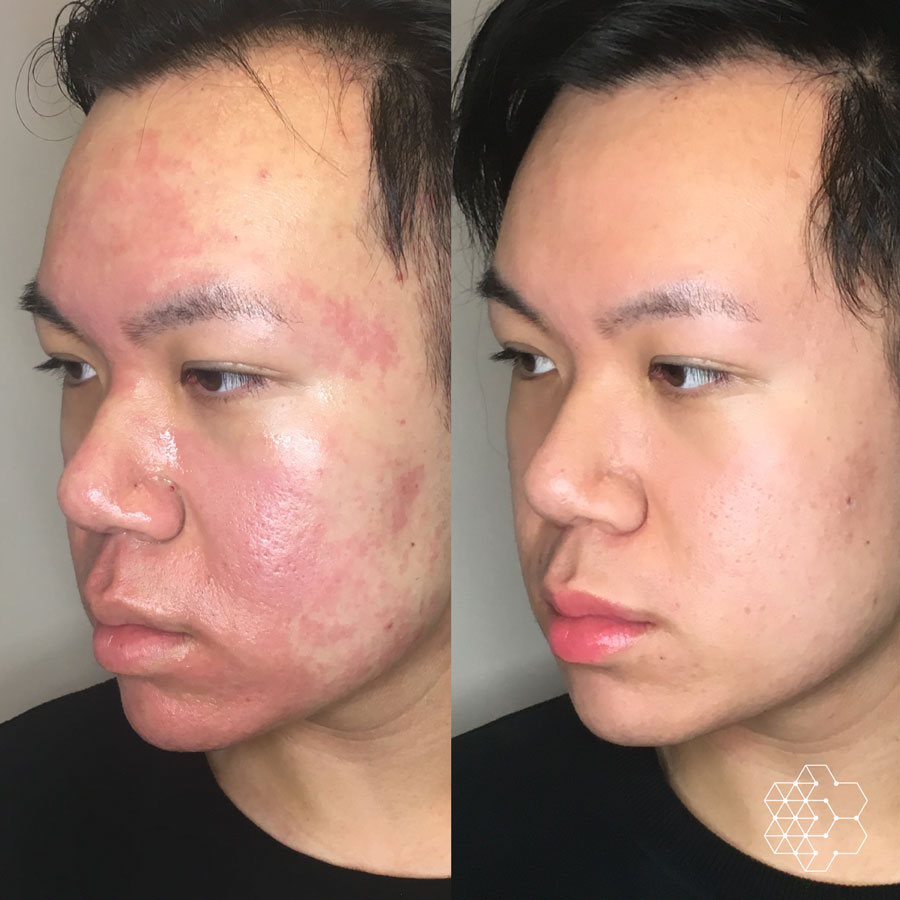Targeted Acne and Acne Scars Treatment: Redeem Your Clear Skin
Targeted Acne and Acne Scars Treatment: Redeem Your Clear Skin
Blog Article
Exploring Skin Problem: Determining and Treating Acne Scars for Healthier Skin
Acne scars represent a substantial problem for individuals seeking to maintain healthy and balanced skin, as they can affect both appearance and self-worth. Understanding the numerous sorts of scars, from atrophic to hypertrophic, is important for figuring out suitable therapy options. While specialist treatments like chemical peels and microneedling can be efficient, the importance of individualized treatment strategies can not be overemphasized. In addition, preventative measures play an important function in reducing future scarring. As we discover these facets, one have to take into consideration how the appropriate technique can result in transformative outcomes.
Recognizing Acne Marks
Understanding acne marks is crucial for anyone who has experienced severe acne, as these marks can have a long lasting effect on both physical appearance and psychological wellness. Acne scars create when the skin undergoes inflammatory feedbacks during energetic acne lesions. The severity of scarring is often affected by variables such as the kind of acne, its period, and individual skin attributes.
The body's natural healing process can result in either atrophic marks, which look like anxieties in the skin, or hypertrophic marks, which are increased and arise from overflow of collagen. Additionally, the psychological toll of acne marks must not be taken too lightly; several individuals report sensations of embarrassment, stress and anxiety, and lowered self-worth. This emotional burden can influence social interactions and total high quality of life.
Resolving acne marks calls for a detailed understanding of their formation and effect. Understanding of the potential for lasting repercussions related to neglected marks can encourage people to look for ideal treatments. Early treatment and efficient management methods can substantially improve skin look and boost psychological durability, stressing the relevance of recognizing the intricacies bordering acne marks.
Kinds Of Acne Marks
Acne scars can be classified right into unique types, each displaying one-of-a-kind qualities and calling for certain therapy methods. The primary sorts of acne marks consist of atrophic, hypertrophic, and keloid marks.

Hypertrophic scars, in comparison, are elevated above the skin degree and are the result of extreme collagen production throughout the healing procedure. They usually continue to be within the boundaries of the original acne lesion. Keloid scars are comparable but expand beyond the original injury site, creating bigger, elevated locations that can be itchy or uncomfortable.
Recognizing these types of scars is necessary for selecting ideal treatment options. Different scars may react far better to specific therapies, such as laser therapies, fillers, or surgical interventions, emphasizing the relevance of a tailored method to acne mark monitoring.
Recognizing Your Scars
When reviewing the look of your skin, it is critical to precisely recognize the kind of scars existing, as this will notify the most effective treatment strategy. Acne scars normally fall under two categories: hypertrophic and atrophic scars. Atrophic marks, which are one of the most typical, look like depressions or imprints on the skin. These can better be classified into ice-pick scars, boxcar scars, and rolling marks, each displaying distinctive attributes and calling for various techniques for analysis.
Hypertrophic scars, on the other hand, are raised and happen because of too much collagen production during the healing procedure. Identifying the specific attributes of your marks-- such as width, appearance, and deepness-- is essential for correct recognition. Furthermore, think about the circulation of marks across your skin, as this can suggest the extent and period of the acne condition.
Engaging with a skin specialist can provide useful understandings right into the nature of your scars, helping in the distinction in between numerous kinds. A thorough understanding of your scars will inevitably bring about a much more customized and reliable therapy plan, making sure a more clear and healthier complexion.
Therapy Choices Readily Available
Recognizing the specific kind of acne scars existing on your skin lays the foundation for discovering reliable therapy choices. Usual sorts of acne scars consist of atrophic (depressed), hypertrophic (increased), and post-inflammatory erythema.
For atrophic scars, choices such as chemical peels, microneedling, and laser resurfacing are commonly used. Chemical peels make use of acids to remove the external layer of skin, advertising new cell growth.
Hypertrophic marks can be treated with corticosteroid shots to flatten the mark or laser treatment to lower soreness and improve appearance. acne treatment for sensitive skin. Silicone gel sheets and stress dressings may also aid in taking care of increased scars
On top of that, facial fillers can briefly load in anxieties from atrophic marks, while surgical excision might be proper for severe cases. Each therapy option has its considerations and benefits, making it important to talk to a skin article source specialist. They can give personalized suggestions based upon the type and severity of your marks, as well as your skin type and total health and wellness.
Tips for Avoidance
Efficient avoidance strategies can dramatically reduce the probability of developing acne scars. Using non-comedogenic items helps prevent blocked pores, which can exacerbate acne.
Preventing need to stand out or pick acne lesions is important, as this can lead to deeper skin damages and increase the threat of scarring. Rather, take into consideration making use of a cold compress or non-prescription treatments to lower swelling and redness.
Sun defense is one more important aspect of avoidance; ultraviolet (UV) rays can dim marks and prevent the recovery process. Using a broad-spectrum sunscreen with at the very least SPF 30 daily can protect the skin and advertise also healing.
Finally, preserving a well balanced diet plan abundant in antioxidants, minerals, and vitamins sustains skin wellness and recovery. Remaining moisturized and taking care of stress degrees can additionally play a significant function in reducing acne flare-ups. By implementing these approaches, people can considerably decrease their opportunities of creating acne scars.

Conclusion
In final thought, understanding and recognizing acne scars is vital for effective therapy and accomplishing much healthier skin. Various types of acne marks, consisting of atrophic and hypertrophic scars, necessitate particular treatments customized to individual requirements.
The body's natural recovery process can result in either atrophic scars, which show up as anxieties in the skin, or hypertrophic marks, which are elevated and result from overproduction of collagen. They are further split right into three subtypes: ice choice scars, boxcar scars, and rolling scars. you can try here Acne scars typically drop into two classifications: hypertrophic and atrophic marks. These can further be identified right into ice-pick scars, boxcar marks, and rolling marks, each displaying distinct qualities and calling for various approaches for assessment.
Different types of acne scars, consisting of atrophic and hypertrophic marks, you can find out more necessitate specific treatments customized to individual needs.
Report this page